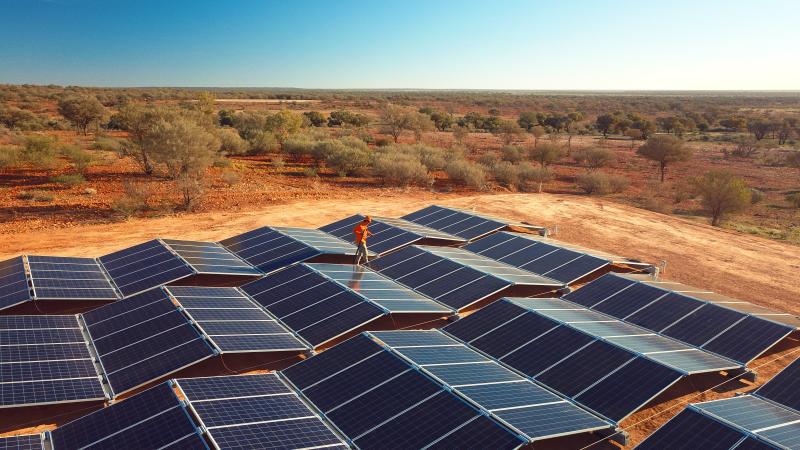
Government-owned electricity retailer Jacana Energy has contracted 45MW of solar PV from utility-scale projects in the Northern Territory, Australia.
This solar PV will be sourced from the Katherine, Batchelor, and Manton Dam solar PV power plants, which are owned by Eni Plenitude, a subsidiary of the Italian multinational energy company Eni.
Try Premium for just $1
- Full premium access for the first month at only $1
- Converts to an annual rate after 30 days unless cancelled
- Cancel anytime during the trial period
Premium Benefits
- Expert industry analysis and interviews
- Digital access to PV Tech Power journal
- Exclusive event discounts
Or get the full Premium subscription right away
Or continue reading this article for free
The Katherine solar PV plant has an installed capacity of 34MW and a co-located 6MW battery energy storage system (BESS). In 2019, the project represented Eni’s first venture into the Australian renewable energy market.
Eni further expanded its presence by acquiring the Batchelor and Manton Dam solar PV power plants in late 2019. These plants, which have a generation capacity of 12.5MW and were completed in 2020, were completed in 2020.
Jacana Energy CEO Rod Hayes said the contracts will increase the share of renewables in the energy mix at a larger scale than previously seen in the Territory.
“At Jacana Energy, we’re about leading smart energy solutions for the Territory. New sources of energy, including renewables, must be brought into the mix where it makes sense,” Hayes said.
“We’re focused on lowering the total costs of the energy system. We’re grateful to Plenitude for their patience under challenging circumstances, and we look forward to continuing to work with them in the future.”
Jacana’s move to secure solar PV energy will likely be welcomed by the broader energy industry in the Northern Territory, as the technology is regarded as one of the cheapest forms of energy generation.
It will also be welcome as a positive spin on the renewable energy transition in the Territory following a turbulent start to the year. Indeed, earlier this year, the Northern Territory government confirmed it would be scrapping the region’s 50% renewables by 2030 target, deeming it “reckless”.
However, solar PV will continue to play an integral role in decarbonising the Territory and ensuring low-cost bills for households and businesses.
For instance, the government is supporting the development of the AU$400 million (US$258 million) Darwin Renewable Energy Hub, which would connect directly to the Darwin-Katherine grid.
The hub involves co-locating up to six large-scale solar PV power plants, capable of generating 180-210MW of renewable energy, alongside a BESS on a single site near existing network infrastructure. The size of the BESS has not been disclosed.






